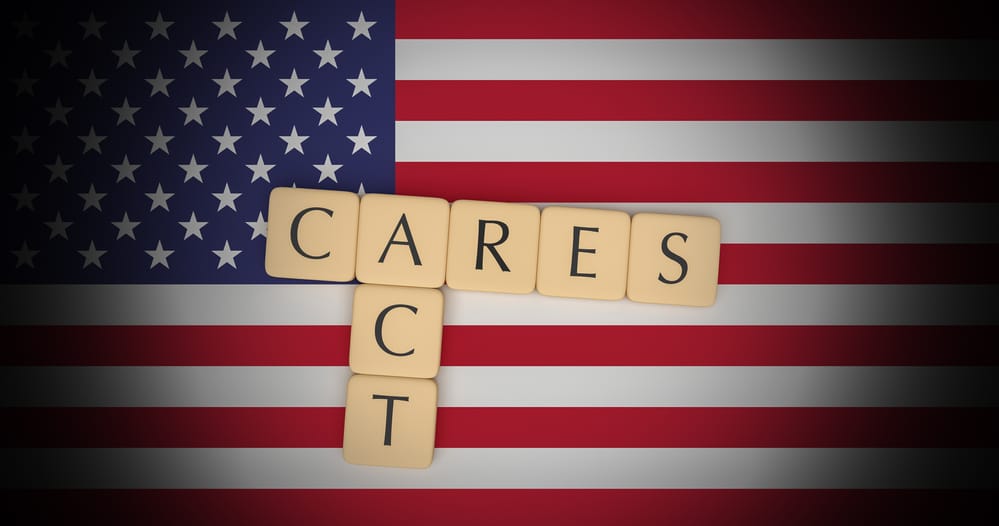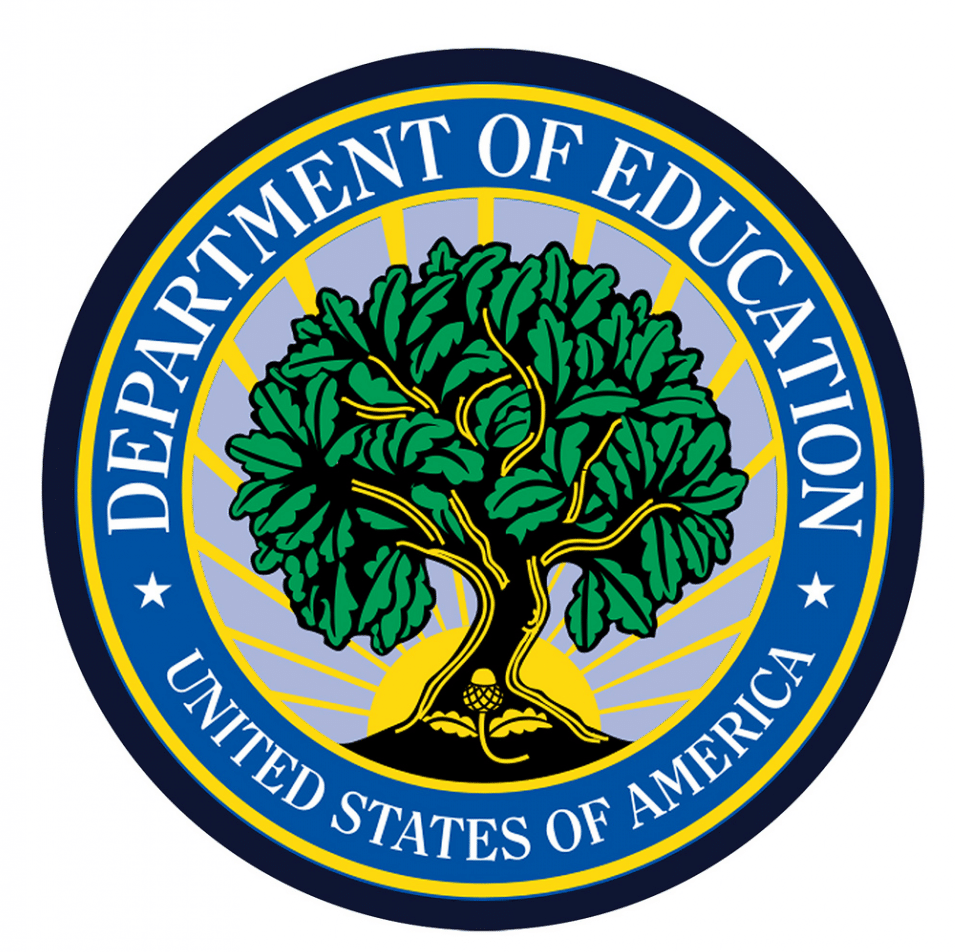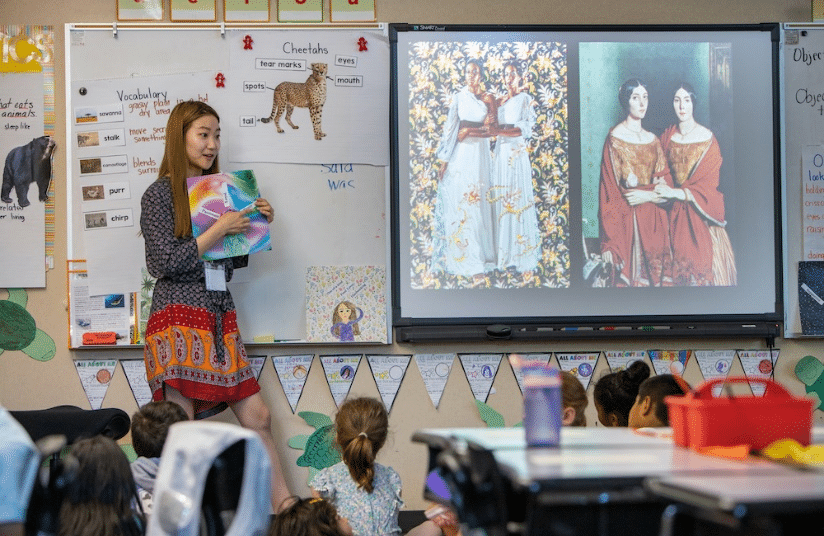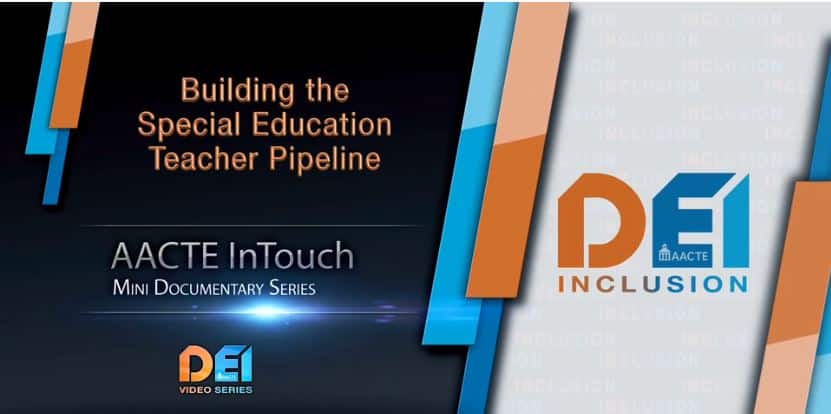27 Apr2020
AACTE Responds to COVID-19
By Jacqueline Rodriguez

AACTE members across the country are seeking novel ways to approach clinical practice, observation hours, and practicum expectations for their teacher candidates in order to address the nation’s need for an excellent teaching workforce in our PK-12 schools during COVID-19. AACTE and CEEDAR will co-host a second Lunch and Learn focused on strategies for leveraging partnerships in innovative ways to facilitate new opportunities to learn May 1, 2020, 1:00-1:30 p.m. ET.
Education leaders from Ohio, including our AACTE Board Member and associate dean of Bowling Green State University (BGSU), Mary Murray, will provide examples of educator preparation faculty and district partnerships that are adapting instructional modalities for students with the help of teacher candidates. From early childhood to secondary content areas, including special education, candidates are supporting their district partners through the development of lessons, online tutoring, supporting parents in their navigation of distance learning, and direct instruction online.
Join us to learn how you might apply these practices in your own context. Register now for Just-in-Time Strategies for Leveraging EPP-LEA Partnerships.
24 Apr2020
By Nuala Benisek

The morning of March 12, 2020 at the school where I had just started student teaching, teachers were directed to prepare 10 days’ worth of learning material for students in anticipation of the schools being closed for a period of two weeks due to the coronavirus. This was initially hoped to be a brief interlude—like an extended spring break—and while it was expected that students might or might not complete their learning activities at home, any minor losses in progress would surely be made up when the students returned to school in early April.
As time went on and it was clear that school could not resume as planned, decisions had to be made about remote learning—what it would look like, what expectations could be placed on students, and many other big and small decisions. In special education, these decisions have the legal considerations of students’ IEPs. Compliance with IEPs is evidenced in data collection and benchmark assessments, and the procedures to collect data and administer assessments must be consistent for validity.
21 Apr2020
By Jane E. West

This blog post is written by AACTE consultant Jane West and is intended to provide updated information. The views expressed in this post do not necessarily reflect the views of AACTE.
Implementation of the $2 Trillion CARES Act: Where Do We Stand?
It’s hard to keep track of the swirl of information about federal efforts to address the pandemic in the education space. Here is my best shot at a high-level summary of where things stand:
- It’s been three weeks since the $2 trillion third package of funding (COVID-3 or the CARES Act) became law
- The bill includes the following and distribution to date is as noted:
- $13.5 billion for elementary and secondary education
- No announced process or timeline for distribution yet
- $14.25 billion for higher education
- $6.3 billion is being distributed to IHE’s for students who need emergency financial aid and have expenses related to the pandemic
- $3 billion for a Governor’s Emergency Education Relief Fund
- fund now available for distribution
07 Apr2020
AACTE Responds to COVID-19
By Lynn M. Gangone and Jacqueline Rodriguez

With the onset of the coronavirus (COVID-19), school districts, institutions of higher education, and educators are finding themselves in uncharted territory. As schools across the nation are forced to shut their doors, finding ways to best serve all students equitably has never been more urgent. This is especially true for our most vulnerable students—those with disabilities.
COVID-19 hit hard and fast. And with that, so did the shift from in-school instruction to online learning. We know that special education students receive, consume, and apply information differently in face-to-face settings versus online environments. However, the rapid onset of COVID-19 did not give educators, parents, or students time to adequately prepare for the transition.
06 Apr2020
AACTE Responds to COVID-19
By Jane E. West
This blog post is written by AACTE consultant Jane West and is intended to provide updated information. The views expressed in this post do not necessarily reflect the views of AACTE.
Implementation of CARES Act – Third COVID Relief Package
The Administration is moving to implement the massive $2 trillion COVID response bill (known now as COVID-3) which was enacted on Friday, March 27 . For education, this means $30.75 billion for an Education Stabilization Fund that includes:
- $13.5 billion for elementary and secondary education (can be used for any activity authorized under major education laws including ESSA, IDEA, CTE and Homeless Education)
- $14.25 billion for higher education; At least 50% is for emergency financial aid to students and expense related to the pandemic
- $3 billion for governors to be used for emergency grants for the most affected local education agencies, institutions of higher education and those deemed essential to providing childcare, early childhood, K-12 or higher education services
27 Mar2020
AACTE Responds to COVID-19
By AACTE

The following AACTE Statement was sent to the National Governors Association.
During the health emergency of COVID-19, AACTE is encouraging its members, as well as states and districts, to explore partnerships between district and educator preparation programs to address the increased workforce demands for special educators in our nation’s schools. In particular, we urge stakeholders to
Identify opportunities for special education teacher candidates to continue their contributions to educational opportunities for students with disabilities (e.g. clinical practice opportunities or paraprofessionals in temporary positions) for the duration of the impact of COVID-19 on our school system.
23 Mar2020
AACTE Responds to COVID-19
By Jane E. West
This blog post is written by AACTE consultant Jane West and is intended to provide updated information. The views expressed in this post do not necessarily reflect the views of AACTE.
Washington Continues to Respond to the Coronavirus Epidemic
The Congress and federal agencies are likewise making changes by the moment. A 50,000 foot overview includes the following.
Legislative activity
- On March 6, Congress passed the first COVID-19 stimulus bill – an $8 billion package to help states and localities address the pandemic.
- On March 18, Congress passed the second COVID-19 relief package, which ensures paid sick leave to certain employees, expands SNAP and Medicaid, and provides emergency assistance.
- Congress is now considering the third COVID-19 relief package, a measure which will total between one and two trillion dollars and may address issues as far reaching as increases in unemployment insurance payments, financial assistance for hospitals and health care providers, a “state stabilization fund,” direct cash payments of $1,200 per qualified person, small business guaranteed loans, and billions in loans for industries, such as airlines. Provisions related to education are also on the menu, as described in the next article.
23 Mar2020
By U.S. Department of Education
 U.S. Secretary of Education Betsy DeVos announced today the Department has released new information clarifying that federal law should not be used to prevent schools from offering distance learning opportunities to all students, including students with disabilities. This new resource from the Office for Civil Rights (OCR) and the Office of Special Education and Rehabilitative Services (OSERS) explains that as a school district takes necessary steps to address the health, safety, and well-being of all its students and staff, educators can use distance learning opportunities to serve all students.
U.S. Secretary of Education Betsy DeVos announced today the Department has released new information clarifying that federal law should not be used to prevent schools from offering distance learning opportunities to all students, including students with disabilities. This new resource from the Office for Civil Rights (OCR) and the Office of Special Education and Rehabilitative Services (OSERS) explains that as a school district takes necessary steps to address the health, safety, and well-being of all its students and staff, educators can use distance learning opportunities to serve all students.
“It was extremely disappointing to hear that some school districts were using information from the Department of Education as an excuse not to educate kids,” said Secretary DeVos. “This is a time for creativity and an opportunity to pursue as much flexibility as possible so that learning continues. It is a time for all of us to pull together to do what’s right for our nation’s students.”
21 Feb2020
By Dustin Wunderlich
The articles below originally appeared on the University of Washington College of Education website and are reprinted with permission.
Jo ining doctoral research and teacher education program improvement
ining doctoral research and teacher education program improvement
While incorporating issues of equity and social justice in the preparation of future teachers has long been a focus at the University of Washington College of Education, it wasn’t well understood until recently how that commitment is reflected in graduates’ daily teaching practice.
That picture is getting clearer thanks to an internship for UW doctoral students in teacher education launched three years ago. In a new podcast, Patrick Sexton, assistant dean for teacher education, and Cristina Betancourt, a graduate student in teaching and curriculum, discuss the College’s work to marry teacher education program improvement with the learning of its doctoral students through its Teacher Education Research and Inquiry (TERI) internship.
Sexton and Betancourt are part of a team who will present their work developing case studies of recent alumni for program improvement at the 2020 meeting of the American Association of Colleges for Teacher Education.
Read more.
Incorporating disability studies curriculum in teacher education
While Washington has recognized October as Disability History Month for more than a decade — and schools are asked to honor the month in some fashion — teachers have had limited resources available to help them actually enact disability studies curriculum in the classroom.
18 Feb2020
By Jane E. West

This blog post is written by AACTE consultant Jane West and is intended to provide updated information. The views expressed in this post do not necessarily reflect the views of AACTE.
Bad News for Education in President Trump’s FY 2021 Budget Proposal
The FY 2021 appropriations process was officially launched with the release of the President’s budget proposal on Monday. The budget is thematically similar to previous Trump budgets, in that it calls for big spending cuts all around and proposes federal support for private schools in the form of a tax credit for donations to scholarship programs (called “Education Freedom Scholarships”). The proposal represents an overall 7.8% cut ($5.6 Billion) to the Department of Education. Key features of the proposal include the following:
Elementary and Secondary Education
- Twenty-nine K-12 grant programs will be consolidated into a single block grant (“Elementary and Secondary Education for the Disadvantaged Block Grant”) designed to provide maximum flexibility for state and local systems at $19.4 Billion – a $4.7 Billion cut from current spending.
- The prized charter school grant program is consolidated into the block grant.
- The big winner in the budget proposal is Career and Technical Education which is slated for $763 million increase.
- Education Freedom Scholarships (tax credits for private schools) would cost $46 Billion over 10 years.
- All IDEA programs are level funded; however, Part B of IDEA receives a $100 million increase.
13 Feb2020
By Katrina Norfleet

The Council of Chief State School Officers (CCSSO) recently updated its Supporting Inclusive Schools for the Success of Each Child: A Guide for States on Principal Leadership guide. Developed in collaboration with AACTE and other education partners, this online guide strengthens principals’ capacity to lead inclusive schools to ensure each student has an equitable opportunity to succeed. The updates include additional resources and a new policy to practice section, showcasing the work of the four states—Arkansas, Georgia, Mississippi, and Ohio—involved in CCSSO’s Advancing Inclusive Principal Leadership (AIPL) State Initiative, of which AACTE is also a partner. The four states are refining their school leader preparation and development efforts to ensure there is a focus on supporting the academic and social and emotional success of each learner, with an emphasis on those with disabilities.
11 Feb2020
By Mary T. Brownell
 Throughout the United States, schools are facing a critical shortage of special education teachers. This crisis is growing due to an emerging demand for special education teachers, coupled with a diminishing number of qualified candidates, recruitment challenges, and a high turnover rate. Reversing this crisis requires a multiprong approach that includes short- and long-term strategies to prepare and support teachers. Special education is complex, and one common type of instruction does not support all disabilities. To promote equity in education, we must ensure students with disabilities have access to proper assessment, resources, and qualified educators that correspond with their needs.
Throughout the United States, schools are facing a critical shortage of special education teachers. This crisis is growing due to an emerging demand for special education teachers, coupled with a diminishing number of qualified candidates, recruitment challenges, and a high turnover rate. Reversing this crisis requires a multiprong approach that includes short- and long-term strategies to prepare and support teachers. Special education is complex, and one common type of instruction does not support all disabilities. To promote equity in education, we must ensure students with disabilities have access to proper assessment, resources, and qualified educators that correspond with their needs.
11 Feb2020
By Deborah Koolbeck
 On Monday, February 10, 2020, the President kicked off the Fiscal Year 2021 (FY21) budget process by making his budget request to the Congress. Generally released on the first Monday in February, the delay reflects the delay in completing the FY20 appropriations process, which concluded on December 20, 2019. With a divided Congress, we should expect the Administration’s highest priorities to emerge as the heads of agencies and departments testify before the subcommittees of jurisdiction on the Appropriations committees later this spring. We will then learn the priorities of the Democratic Caucus leading the U.S. House of Representatives and those of the Republican Caucus leading the U.S. Senate, as subcommittee bills are released and marked up.
On Monday, February 10, 2020, the President kicked off the Fiscal Year 2021 (FY21) budget process by making his budget request to the Congress. Generally released on the first Monday in February, the delay reflects the delay in completing the FY20 appropriations process, which concluded on December 20, 2019. With a divided Congress, we should expect the Administration’s highest priorities to emerge as the heads of agencies and departments testify before the subcommittees of jurisdiction on the Appropriations committees later this spring. We will then learn the priorities of the Democratic Caucus leading the U.S. House of Representatives and those of the Republican Caucus leading the U.S. Senate, as subcommittee bills are released and marked up.
For the U.S Department of Education (Department), the President’s Budget Request cut the agency’s funding by $6.1 billion, or 8.4% from Fiscal Year 2020 levels. The key initiatives in the President’s Budget Request include the following:
Education Freedom Scholarships
This program establishes a federal tax credit program for voluntary donations to state-designed scholarships for elementary and secondary students offered by state-identified 501c3 non-profit entities. While these scholarships have been proposed before, this FY21 request includes and expansion of the opportunities for students and families.
04 Feb2020
AACTE DEI Video: Building the Special Education Pipeline
By Katrina Norfleet
Ed Prep Matters features the “Revolutionizing Education” column to spotlight the many ways AACTE, member institutions, and partners are pioneering leading-edge research, models, strategies and programs that focus on the three core values outlined in the current AACTE strategic plan: Diversity, Equity, and Inclusion; Quality and impact; and Inquiry and Innovation.

In the next segment of the AACTE Diversity, Equity and Inclusion video series, AACTE members address the critical shortage of special education teachers and how to ensure teachers can effectively serve students with disabilities. The video aligns with AACTE’s strategic priority to advocate for high-quality educator preparation and the inclusion of all students in equitable access and opportunity in PK-20 classrooms. In this DEI video, Building the Special Education Pipeline, leaders in educator preparation consider approaches to increasing the pool of highly qualified special education teachers.
31 Jan2020
By Jane E. West

This blog post is written by AACTE consultant Jane West and is intended to provide updated information. The views expressed in this post do not necessarily reflect the views of AACTE.
Federal Budget: The Deficit Explodes; Do Earmarks Return?
The federal government’s budget deficit is projected to reach $1.02 trillion in 2020—the first time since 2012 that the deficit breached the $1 trillion threshold—according to the Congressional Budget Office (CBO). The combination of 2017 tax cuts and new spending have been the biggest contributors to the increased deficit. FY 2020 is likely to see spending in the $4.6 trillion range while the government brings in only $3.6 trillion in tax revenue. CBO Director Phillip Swagel said, “Changes in fiscal policy must be made to address the budget situation, because our debt is growing on an unsustainable path.”
House Appropriations Chair, Rep. Nina Lowey (D-NY) is talking with Democratic colleagues to gauge their interest and seek input. The plan under deliberation would be a revised version of past earmarking with rules in place to keep the system in check. One aide to a freshman Democrat who flipped a GOP-held seat in 2018 noted, “This is not what we came to Congress to do. Voters made it clear years ago that they were tired of pork and special interest spending in Washington and sweetheart deals.” However, Majority Leader Steny Hoyer backs the revival of an earmark-type system. However, the Senate does not seem receptive to the idea. “The Republican Caucus is on the record against that, so that’s not going to go anywhere,” said Senate Appropriations Chair Richard Shelby (R-AL).












 U.S. Secretary of Education Betsy DeVos announced today the Department has released
U.S. Secretary of Education Betsy DeVos announced today the Department has released  ining doctoral research and teacher education program improvement
ining doctoral research and teacher education program improvement

 Throughout the United States, schools are facing a critical shortage of special education teachers. This crisis is growing due to an emerging demand for special education teachers, coupled with a diminishing number of qualified candidates, recruitment challenges, and a high turnover rate. Reversing this crisis requires a multiprong approach that includes short- and long-term strategies to prepare and support teachers. Special education is complex, and one common type of instruction does not support all disabilities. To promote equity in education, we must ensure students with disabilities have access to proper assessment, resources, and qualified educators that correspond with their needs.
Throughout the United States, schools are facing a critical shortage of special education teachers. This crisis is growing due to an emerging demand for special education teachers, coupled with a diminishing number of qualified candidates, recruitment challenges, and a high turnover rate. Reversing this crisis requires a multiprong approach that includes short- and long-term strategies to prepare and support teachers. Special education is complex, and one common type of instruction does not support all disabilities. To promote equity in education, we must ensure students with disabilities have access to proper assessment, resources, and qualified educators that correspond with their needs. On Monday, February 10, 2020, the President kicked off the Fiscal Year 2021 (FY21) budget process by making his budget request to the Congress. Generally released on the first Monday in February, the delay reflects the delay in completing the FY20 appropriations process, which concluded on December 20, 2019. With a divided Congress, we should expect the Administration’s highest priorities to emerge as the heads of agencies and departments testify before the subcommittees of jurisdiction on the Appropriations committees later this spring. We will then learn the priorities of the Democratic Caucus leading the U.S. House of Representatives and those of the Republican Caucus leading the U.S. Senate, as subcommittee bills are released and marked up.
On Monday, February 10, 2020, the President kicked off the Fiscal Year 2021 (FY21) budget process by making his budget request to the Congress. Generally released on the first Monday in February, the delay reflects the delay in completing the FY20 appropriations process, which concluded on December 20, 2019. With a divided Congress, we should expect the Administration’s highest priorities to emerge as the heads of agencies and departments testify before the subcommittees of jurisdiction on the Appropriations committees later this spring. We will then learn the priorities of the Democratic Caucus leading the U.S. House of Representatives and those of the Republican Caucus leading the U.S. Senate, as subcommittee bills are released and marked up.
